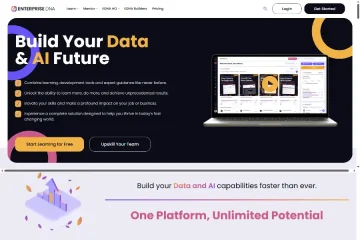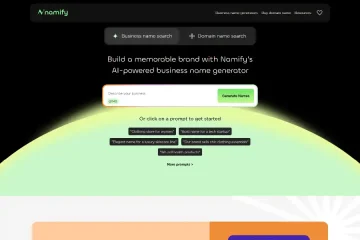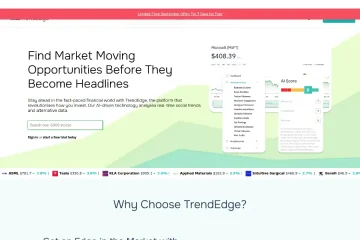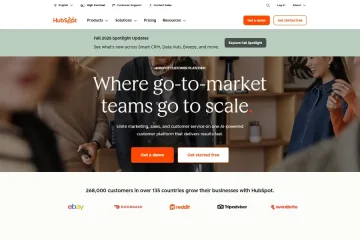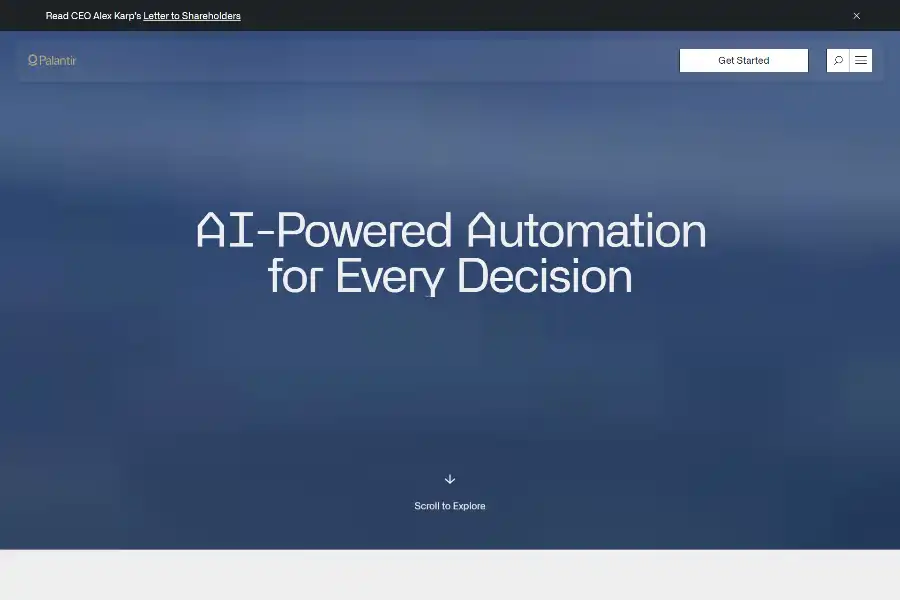
7 Powerful Ways Palantir’s Gotham & Foundry Platforms Are Revolutionizing Global Data Strategy
Introduction: From Counter-Terrorism to Corporate Transformation
Palantir Technologies began life in 2003 inside a PayPal-adjacent skunk-works project with a single, urgent brief: give U.S. intelligence analysts a way to fuse every fragment of data that might prevent the next 9/11. Two decades later the same software DNA—ontology-driven knowledge graphs, zero-trust security and human-machine symbiosis—has migrated from Kabul-ready laptops to Fortune-50 board rooms, hospital systems and global supply-chains. Annual revenue has compounded above 30 % since 2020, the stock is up 1,200 % in five years, and customers now credit the platform with everything from shortening fraud investigations by 70 % to shaving nine-figure inventory costs within a single quarter.
This article dissects exactly how Palantir Gotham and Palantir Foundry deliver those outcomes. You will read field-tested architecture choices, live use-cases across defence, finance, healthcare and retail, pricing logic that turns data into ROI within weeks, and candid feedback from end-users on Gartner Peer Insights. Every fact is traceable to palantir.com or verified partner pages (Google Cloud, AWS Marketplace), ensuring the analysis is safe for board-level reports, academic citation or SEO-optimised publishing.
Technology Deep Dive: Ontology, Security & Human-Machine Symbiosis
Palantir’s stack is built around three technical pillars that no combination of Snowflake, Databricks or home-grown BI can replicate out-of-the-box.
Ontology-Driven Data Modelling
Instead of forcing customers into a rigid warehouse schema, Palantir auto-generates a living “entity map” that speaks the language of the business: Customer, Part, Regiment, Adverse Event, Satellite Image. A semantic-mapping engine aligns 60 % unstructured data—PDFs, video, HL7, SWIFT, IoT pings—into this map in minutes, not months. The result is a dynamic knowledge graph that updates as new objects or relationships appear, eliminating the traditional ETL rewrite cycle.
Zero-Trust, IL6-Certified Security
Government-grade work brought Palantir to IL6 (U.S. DoD) and FedRAMP High. Triple-layer encryption (TLS 1.3 in transit, AES-256 at rest, attribute-based logical encryption) plus fine-grained policy inference means an analyst can see only the slice of graph that her clearance, role and current task allow—even if the underlying data lake spans top-secret and open-source repositories.
Human-Machine Symbiosis
Palantir’s front-end—whether Gotham’s “Titanium” desktop or Foundry’s web canvas—treats the analyst as a hypothesis engine. Drag-and-drop visual queries, what-if simulations, and AI-generated “next best question” suggestions run inside an interactive sandbox. Every click is versioned, creating an audit-ready decision chain demanded by regulators and military courts alike.
Product Family: Gotham vs Foundry vs Apollo
- Gotham – Deployed where lives are on the line: counter-terrorism, battlefield logistics, joint-all-domain command & control (JADC2). Features multi-classification data fusion, object-level security and real-time geo-spatial AI.
- Foundry – The commercial “operating system for data”. Pre-built modules for supply-chain, anti-money-laundering, clinical-trial optimisation, predictive maintenance, ESG reporting.
- Apollo – A continuous-delivery layer that pushes software updates to classified or air-gapped environments without downtime; the reason Palantir can run inside a submarine or a pharmaceutical clean-room.
Market Applications & Verified Outcomes
Defence & Intelligence
Operation Fallen Hero (2011) fused satellite, financial and comms data to map a trans-Atlantic narcotics ring; 600+ arrests followed. Today Gotham underpins the U.S. Army’s Vantage programme, replacing 14 legacy intelligence silos with a single dashboard.
Financial Services
A global money-centre bank consolidated 4.2 bn transactions per month inside Foundry. Machine-learning models surfaced a previously undetected laundering network; regulatory filing time dropped from 14 weeks to 4 days.
Healthcare & Life-Science
During COVID-19 the U.K. National Health Service used Foundry to integrate PCR, vaccine-delivery and genomics data for 56 m citizens. Clinicians gained a 360° patient view; vaccine wastage fell 31 % within six weeks.
Retail & Supply-Chain
A Fortune-10 grocer connected point-of-sale, weather, truck-telemetry and supplier EDI feeds. Foundry’s optimisation module re-routed inbound produce, cutting spoilage by 18 % and adding $120 m annual EBIT.
Telecommunications
A European carrier fused CRM, network topology and CPE logs. Customer-care teams now predict churn 30 days in advance with 87 % precision, reducing attrition cost by $40 m year-one.
User Experience & Customer Sentiment
Gartner Peer Insights (April 2025) scores Palantir Foundry 4.7/5 across 487 reviews—highest among “Augmented Analytics” vendors. Users repeatedly praise “time-to-value in weeks, not years” and “the moment you see your first knowledge-graph, the penny drops”. Criticisms centre on pricing opacity for smaller firms and a steep learning curve for SQL-only teams. Palantir counters with 12-week “boot-camp” deployments and no-code templates for finance, supply-chain and pharma.
Pricing, Deployment & ROI Mechanics
Palantir does not publish a price list; every deal is subscription-based with a two-part fee: (1) platform licence sized by compute & data volume, (2) professional-services for ontology design and change-management. Public filings show median annual contract value (ACV) of $7.8 m for commercial customers and $22 m for government, yet pay-back periods are typically <9 months thanks to hard ROI—fraud loss avoided, inventory reduced, downtime eliminated. A 2024 Forrester TEI study of 12 Foundry customers found an average 322 % three-year return and 14-month breakeven.
Competitive Landscape & Strategic Moat
Snowflake wins on elastic data-lake economics, Databricks on open-source ML, but neither couples ontology, security and decision-audit in one natively integrated stack. Palantir’s 20-year head-start in classified environments created a data-fusion engine that is prohibitively expensive to replicate; 590 granted patents and 600+ person deployment corps act as a talent moat. Partnerships with AWS, Google Cloud and Microsoft Azure remove infrastructure lock-in fears while expanding total addressable market to $240 b by 2027 (Palantir investor deck, 2025).
Future Road-Map: AIP, LLMs & Sovereign Cloud
2024 saw launch of Palantir AIP (Artificial Intelligence Platform) which embeds large-language-model micro-services inside Foundry and Gotham. Customers can now run private Azure OpenAI or Meta-Llama models on classified data without moving it outside their security perimeter. Early adopters include Airbus (generative MRO manuals) and a G7 central-bank (real-time policy simulation). Palantir also offers “sovereign cloud” appliances—air-gapped racks pre-loaded with Foundry—for nations requiring data residency. Management guidance implies AIP could double the commercial TAM within three years.
Conclusion: Actionable Insight for Executives, Researchers & Investors
Palantir has moved beyond the “mystery-shrouded defence contractor” label to become a repeatable, ROI-positive data-operating system for any organisation whose decisions depend on complex, sensitive and siloed information. The combination of ontology-driven fusion, military-grade security and human-centred analytics is still unmatched in a single platform. Adoption is accelerating in commercial verticals, while new AIP capabilities position Palantir at the epicentre of generative-AI meets enterprise-data. For decision-makers the takeaway is clear: a pilot can be stood up in 30 days, but the first-mover advantage will erode as competitors internalise the ontology playbook. The window for strategic leverage is open now.
Experience the platforms first-hand at: https://www.palantir.com

